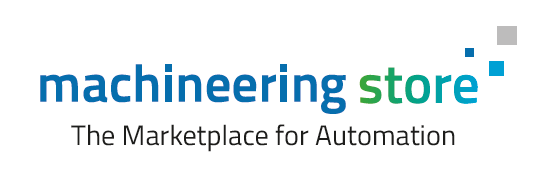The asset administration shell (AAS), the digital product passport and the digital nameplate are considered essential elements for promoting digital transformation in industry. But what is the current status of their development and what added value can they offer, especially for medium-sized companies? Dr. Georg Wünsch, founder and managing director of machineering, shares his assessment of these technologies and their market readiness.
Challenges and Opportunities of the Administration Shell (AAS)
The administration shell plays a key role in Industry 4.0 and digital twins, as it provides standardized and structured information on machines and products. Dr. Wünsch sees considerable potential in the administration shell, particularly in areas such as customer service and sales. "The concept is promising and has great potential for increasing efficiency," he explains. However, the technology is not yet fully developed, which is currently hindering comprehensive market penetration.
The digital product pass as an entry into digitalization
While the digital product passport is currently only available in an early phase, it already offers an important starting point for companies that want to take the step towards digitalization. According to Dr. Wünsch, the product passport enables digital documentation and transparency along the value chain. Companies can use it to record information about products and machines in a structured manner and make it accessible. This transparency will lead to an increase in efficiency and interoperability in the long term, which is particularly relevant for medium-sized companies.
Practical implementation and obstacles
The introduction of new standards, such as the administration shell and the digital product passport, often represents a major challenge in practice. "The implementation of such concepts is not always easy and can lead to frustration," says Dr. Wünsch. Historical examples show that even sensible standards can meet with resistance, which is still a problem today. It is difficult for specialists worldwide to work uniformly according to the same specifications. Despite these difficulties, there is a high level of willingness to develop further and adapt to the new requirements.
First successes in automation technology
Although the administration shell has not yet been fully implemented, there are already successful use cases, such as the use of standards such as AutomationML for data exchange or FMU/FMI for simulation processes. These technologies have proven to be efficient in practice and are already widely used in mechanical engineering. In addition, established standards such as STEP, native CAD data and DLLs are already contributing to the optimization of production processes.
Future developments and automation
For the future, companies like machineering are planning to increase automation, especially for simulation models offered through the machineering Store. The goal is to use the administration shell to reduce maintenance effort while increasing efficiency. However, testing effort remains a major challenge. "Automation through FMI simplifies simulation, but manual testing is still essential to ensure that the components and firmware delivered meet requirements," explains Dr. Wünsch.
Another promising approach is the development of a vendor package that will enable automation partners to present their components independently as models in the Engineering Store. This should happen regardless of the technical basis, be it FMI or DLL. The key to the success of this approach, however, lies in establishing a uniform data format that can be used by all parties involved.

